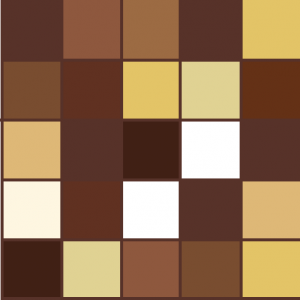the naked truth: why it’s taken so long for fashion to reconceptualise “nude” colours

In fashion, “nude” has traditionally referred to a light beige colour. Nude shoes, nude nail polishes, nude lipsticks and nude underwear have always tended to come in pale and fair shades. The name “nude” refers to the products’ similarity to the wearer’s skin tone as if the wearer’s nails, lips, feet or middle section were bare, or nude.
This, obviously, completely ignores women whose skin is not a variation on beige. A number of clothing and make-up companies have recently begun extending their definitions of “nude” to include the skin shades of women of colour.
While this is a significant improvement, it beggars belief that it took this long. It also does not eradicate the ongoing discrimination and invisibility many women of colour experience at the hands of the fashion and beauty industries.
The default for “nude” continues to cater primarily to white people. The first six hits for the Google search “nude pumps” links to the “beige” section of online shoes stores. Merriam-Webster’s dictionary includes a definition of nude as “having the colour of a white person’s skin”.
All of this demonstrates the position of white skin as the default skin colour – the race deemed “normal”. A number of fashion companies list “neutral” as a light peachy colour. It inherently legitimises all white bodies and forces non-white bodies to justify themselves in relation to their white counterparts.
African cultural commentary magazine, Afritorial wrote about the experiences of many African models trying to find work:
‘Sometimes photographers and makeup artists are scared of their black skin – not knowing how to apply black make-up or light them properly. There’s also a sort of hesitancy expressed about the waist and bust sizes, the shape of the nose and curve of the butt – in essence our bodies just don’t “fit” the skinny norm.’
Model booker Annie Wilshaw told Afritorial: ‘When the client sends you a brief you know straight away they’re not talking about a black girl. They say they want “a girl with long hair, who looks like a fairy” or something. When they want a black girl, they will say “looking for mixed-race girl, tribal-prints location, desert scene”’.
This ambivalence or outright distaste for non-white bodies in fashion explains the disproportional representation of white women in fashion. Every fashion season there is polite concern expressed over the lack of diversity on the runways. And yet they continue to be overwhelmingly white. At the four major Fall 2015 fashion weeks Caucasians made up around 80% of the runway models.
Since 1989, American Vogue has had one woman of colour on the cover of its September issue (its most significant and lucrative annual issue). The model was Joan Smalls and she shared the cover with two other white models.
In 2013 Jourdan Dunn, another model of colour, tweeted ‘I’m normally told I’m cancelled because I’m “coloured” so being cancelled because off [sic] my boobs is a minor :)’. She later told The Guardian:
‘I feel like the people who should be talking about it, and who can make a difference, aren’t. All I can do is talk. The people higher than me – the stylists, the designers, the casting directors – they’re the ones with the power to change this. That’s where the conversation needs to happen – at big-dog level. The people who control the industry. They say if you have a black face on a magazine cover it won’t sell, but there’s no real evidence for that. It’s lazy.’
The fashion industry’s race problem does not stop at poor representation of, and product ranges for, people of colour. It also routinely uses non-white bodies as visual props to sell its wares. People of colour often feature in fashion photography and advertisements to create an ambience of exoticism and adventure. The white people wearing the products are the focus of the images while the people of colour are simply there for some cultural context. These images create simplistic and reductive images of the “other” countries and their inhabitants, and reassert the positioning of the active white models and the passive non-white people in the background.
An additional hurdle to accommodating non-white fashion and beauty needs is the tendency for many white feminists to disregard fashion and make-up as trivial or anti-feminist. This is a potentially valid point and the fashion industry is certainly responsible for endlessly problematic and offensive portrayals of gender and sexuality that affect all women.
However, by disregarding the whole argument about the racist usage of “nude” on the grounds that fashion doesn’t matter yet again places white women’s priorities ahead of women of colour’s. It is a privilege to disregard the endless possible products you could buy to “improve” yourself. Many non-white women have very few products to disregard. It is not the responsibility of white women to lecture women of colour about what issues should matter to them.
Feminism’s conversation about the potentially destructive capabilities of the fashion industry needs to be had in tandem with calls for greater inclusivity within that same industry. This should not be contradictory or self-defeating, but an opportunity to build feminism so that it caters to all women, not just the white ones.

